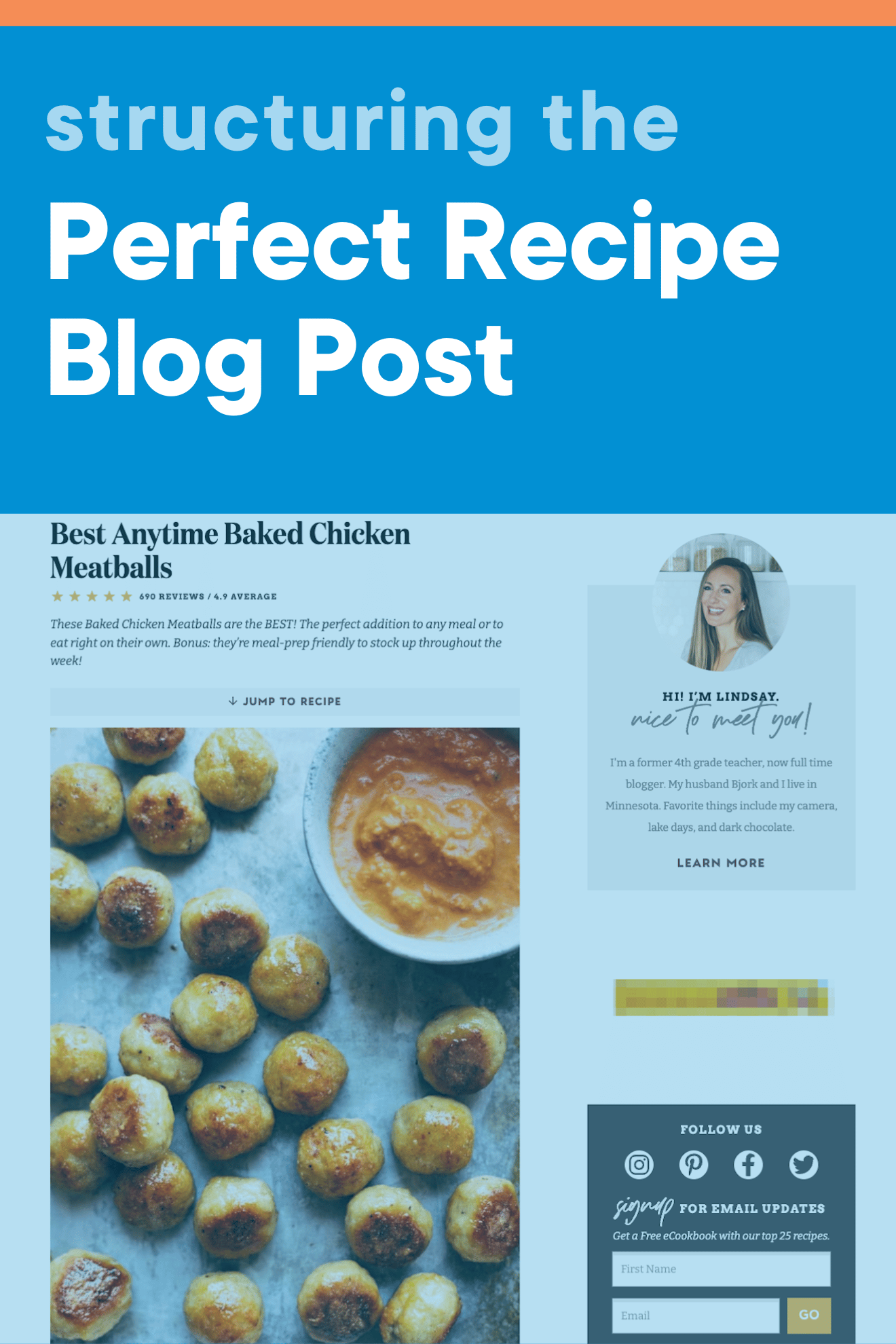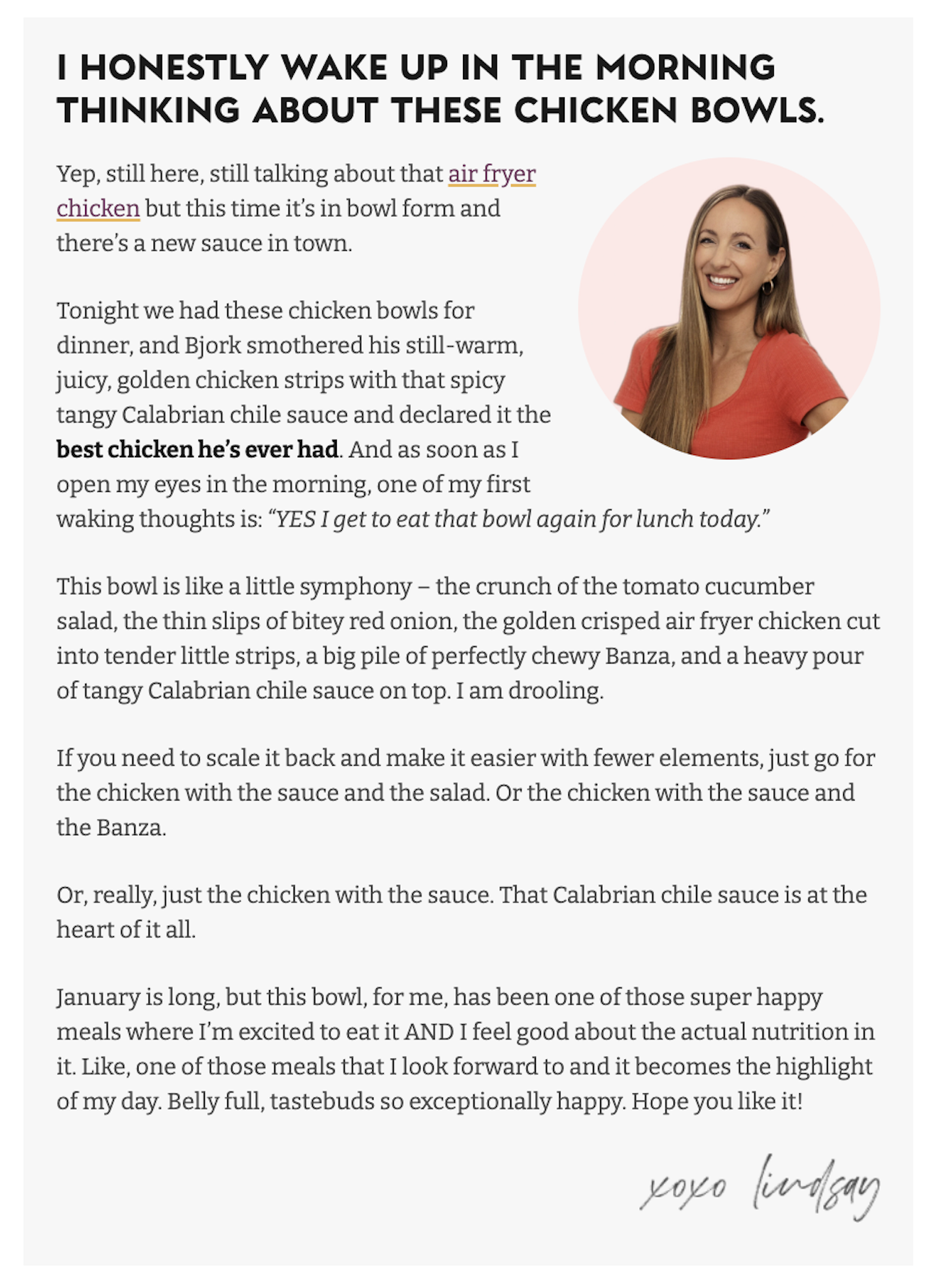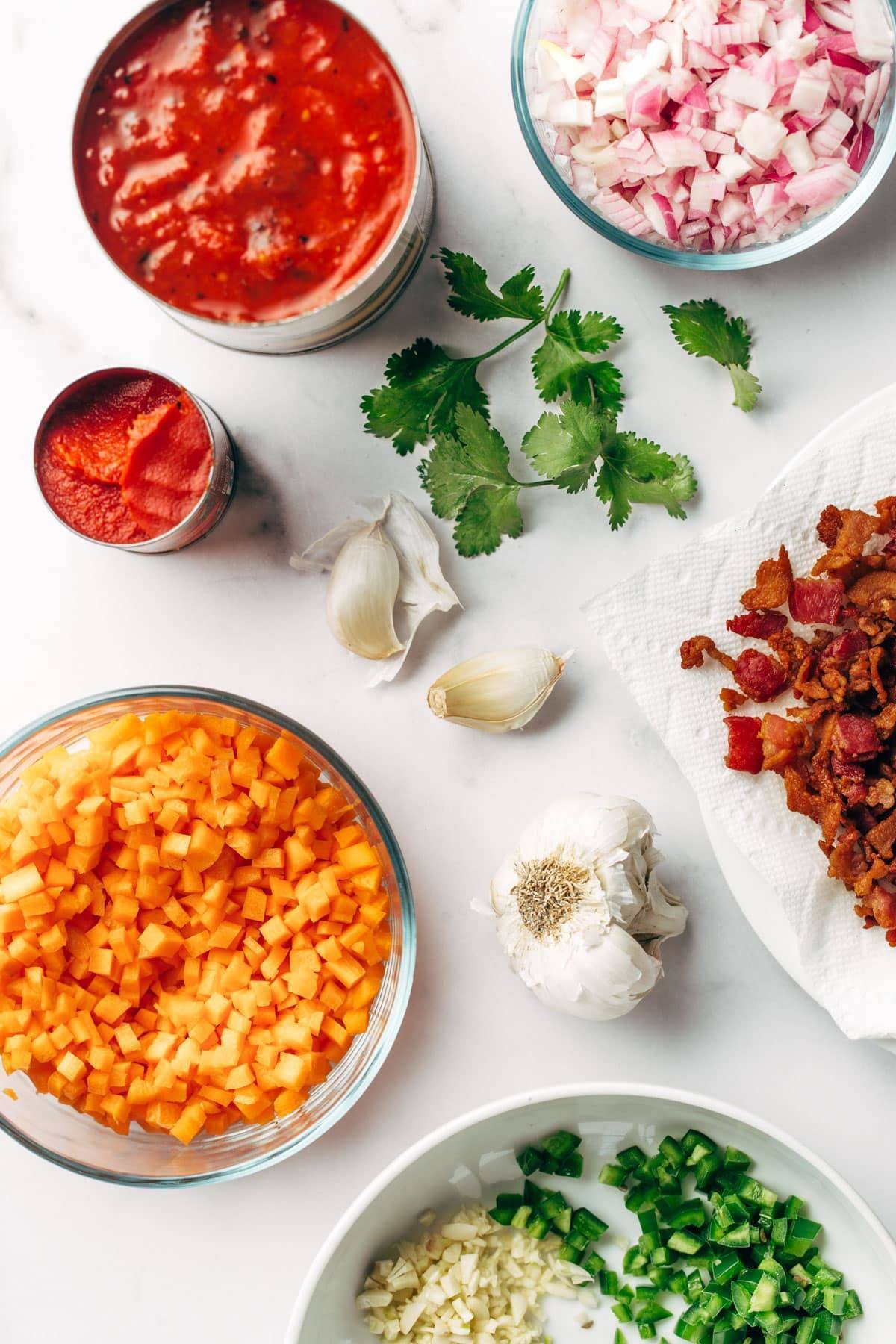Have you ever wondered if there is a perfect framework for a recipe blog post for SEO? Well, the answer is… yes and no. 😅 In this post we’re going to break down the “must haves” for structuring the perfect recipe blog post, including some “nice to haves,” as well as a recommendation for creating your own recipe blog post template.

Why you might want a template for recipe blog posts
Writer’s block, anyone? Sometimes you’re super inspired to write a recipe blog post. You have a story about your family’s history with a recipe, an anecdote about a vacation that inspired a recipe, or information to share about the star ingredient. But… sometimes you’re just writing yet another recipe blog post and the WordPress cursor is staring back at you at the top of a blank post.
Having at least a rough outline of what needs to be included in a recipe blog post is a great way to get started. Creating a personalized recipe blog post template can give structure to your blog posts, allow your readers to know what to expect, and generally please the SEO gods.
How to structure the perfect recipe blog post
As with almost all of our recommendations, these are general best practices, not hard and fast rules. Trial and error is an important part of blogging — see what posts perform best for you in search engines and see what sections of content seem to resonate most with your readers (recipe reviews and comments are a great way to keep a pulse on this). The primary goal of structuring a recipe blog post this way is to optimize your content for the user (not Google)!
Zippy Introduction
The first 2-3 sentences of your blog post should be your sales pitch for the recipe. Why should someone want to make your recipe? Think of this as the highlight reel of your recipe — share main ingredients, keywords, preparation time (especially if it’s a quick recipe!), relevant nutrition information (“packed with protein” or “vegan”), and flavor profile (“cozy and chocolatey” or “savory and cheesy”).
Here are some great examples:
From the Chimichurri Shrimp with Tomatoes recipe on Pinch of Yum: “Saucy, punchy, and delightful Chimichurri Shrimp! Served with a tomato salad, a pile of hot steamy rice, and a dollop of creamy tzatziki.”
From the Pulled Pork Nachos recipe on Tastes Better from Scratch: “Nothing says party time like a giant platter of Pulled Pork Nachos with black beans, jalapeños, sour cream, shredded pulled pork, BBQ sauce, and cheese. A winning appetizer for game-day, or any day!”
From the Bakery-Style Vegan Chocolate Chip Muffins recipe on Rainbow Plant Life: “With a pillowy soft texture, crunchy caramelized topping, and dark chocolate in every bite, these Vegan Chocolate Chip Muffins may just be the muffins of your dreams. They look and taste gourmet but are easy to make.”
Star Photo
The first photo in your blog post should be your best. This is likely the image you will select as your Featured Image, as well. We usually recommend a photo of the finished product of your recipe! 📸
Personal Paragraph (or Two!)
The section of blog posts that many people like to make light of (“just give me the recipe already!”) but we would argue is one of the most important — the personal paragraphs! This is the moment for your personality to shine. Tell us about the recipe! Cover things like:
- Your inspiration for creating the recipe, such as:
- Travel
- Family recipe
- Restaurants
- Ingredients (source, in season, etc.)
- Why you love the recipe
- How you like to eat the recipe
- How you developed the recipe (a peak behind the scenes)
In the age of AI, we believe that this is the writing that will keep followers coming back to your content and your recipes over and over again. Use this part of your blog posts to connect with your loyal readers and differentiate your content from other food blogs (and AI 🙃).
We love this example from Lindsay’s Banza Chicken Bowls with Calabrian Chili Sauce recipe at Pinch of Yum:

Ingredients Breakdown
This is the section where you share the most important ingredients in your recipe. You can also include a little bit about each ingredient (purpose, suggestions for substitutions for certain ingredients, quick notes about preparation, etc.). You might offer additional ingredient suggestions here, as well. This section is a natural one to demonstrate your expertise (E-E-A-T, anyone?).
This is also where you’ll want to include a photo of your ingredients, if you have one! It can also be helpful to include a quick note along the lines of, “make sure to check the recipe card for a full list of ingredients and quantities” in this section!

Step-by-step instructions and photos
In this section you’ll break down the steps to making the recipe, but with a bit more personality than you might find in the recipe card itself. You don’t need to include exact timing or precise instructions, but rather a general idea of how the recipe is made (bonus for including helpful anecdotes here)!
Frequently asked questions
An FAQ block is an easy way to add additional structured data to your post. FAQ blocks can also help readers quickly find answers to questions they potentially have about the recipe!
What should you include in this section? A great place to get inspiration is the ‘People Also Ask’ section on Google. When you search for your recipe keyword (or a main ingredient) what do people already want to know? Other go-to questions include preparation questions, storage tips, substitution questions, and/or nutrition tidbits. This is also a great place to answer questions that come up often in your recipe reviews, comments, or social media DMs!
Recipe card
Can’t forget the recipe card! We have a whole blog post about choosing a WordPress recipe plugin if you’re in the market, but otherwise, this part of your blog posts should be fairly straightforward. Fill out as many sections of your recipe card as possible (structured data!), list the ingredients in the order they’re used in the recipe, and provide as much detail in the instructions as you can.
Want to avoid the 7 mistakes food bloggers make when writing recipes?Also consider including storage suggestions and substitutions suggestions in the Notes portion of your recipe card, as those are useful to readers!
Optional sections
While these sections won’t make sense in every recipe post, they’re nice to have (or necessary) in some! Consider including:
- Links to other, relevant recipes (side dishes, similar recipes, etc.)
- An email opt-in or call-to-action section
- Sponsored post disclosures
- Nutrition facts
- Recommended equipment/tools
And that wraps up our guide to structuring the perfect recipe blog post! Remember, learning how to write for a food blog takes time, but the ultimate goal is that your post makes it as easy as possible for a reader to make your recipe. As long as you’re doing that, you’re off to a great start!
We’d love to know… do you follow a template for your recipe blog posts?
Hi Emily,
I hope you are doing well. Your article helped a lot. I am also running a small food recipe blog and striving for organic traffic to grow my blog. Thanks for your expert tips.
regards.
So happy to hear you found this post helpful!
Currently researching and revamping my blog, this was very helpful. Always enjoy content from food blogger pro. Thank you!
So happy to hear it, Tina! Good luck!
What are your thoughts on including a video in the recipe card? Is the extra time it takes to take the videos and edit, is it worth it?
Embedding the URL to a video in the recipe card is a great idea! While it is definitely additional work to create a video, hopefully you can repurpose it on social media.
Thank you for your article. I’m currently working on rebuilding my recipe blog to drive organic traffic and improve its ranking, so your tips are incredibly helpful to me.
Thanks again!
So happy to hear that this post was useful! Good luck.
Great insights on structuring recipe blog posts! Very helpful for food bloggers like me.
Glad you found it helpful!
Very Nice
Great article. This will help me improve my fod blog https://recipevilla.com
Glad to hear it!
Hi Emily,
Thanks so much for putting all the information together about the structure of a recipe blog post—super helpful!
I have a question about the cooking step photos. I usually include them in the recipe card, but I’ve noticed that many sites (like Pinch of Yum) include prepping steps in the main article itself. Is it okay to keep the prep steps in the recipe card, or have you guys tested this and found it’s better to place them in the article above the recipe card?
Thanks a lot for your help!
Hi Ksenia!
Great question! While including step-by-step cooking photos in your recipe card is super convenient for readers who jump straight to the recipe, placing step-by-step photos in the main article can definitely enhance the overall user experience. It’s great for engaging readers who prefer to scroll through and read about the process before diving into the recipe card. Plus, it helps create a more visual, informative post, which can improve on-page time and user interaction.
I would test out including step-by-step photos in the main article and see how it impacts engagement, bounce rates, and reader feedback for your audience specifically.
Hope that helps!
Very insighful'”